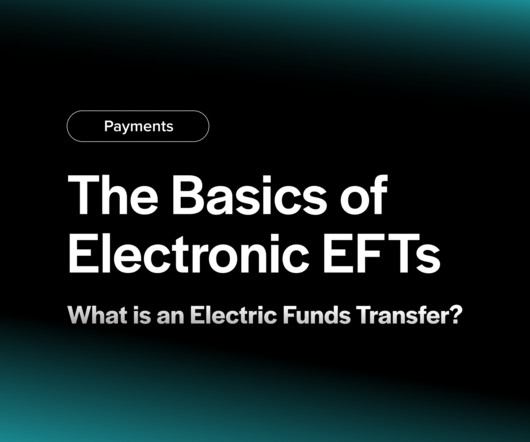What is an EFT Payment? Everything to Know About This Method of Payment
Stax
JULY 9, 2024
EFT transactions also include ATM withdrawals using debit cards with a personal identification number (PIN). Many cash-only businesses have an ATM onsite, given how ubiquitous debit cards are. EFT payments have been around for many decades and have federal laws to protect the electronic transfer of funds.











Let's personalize your content